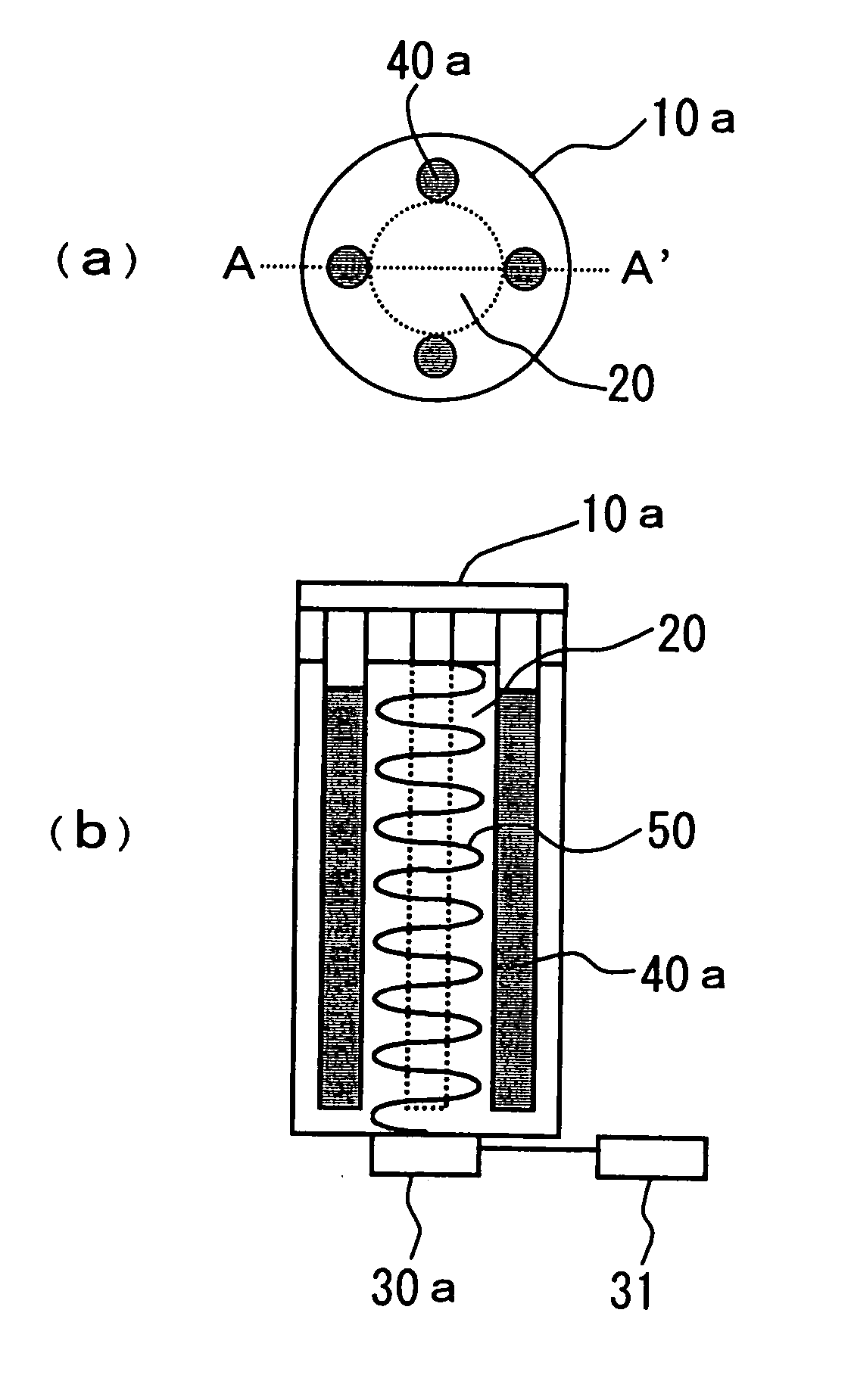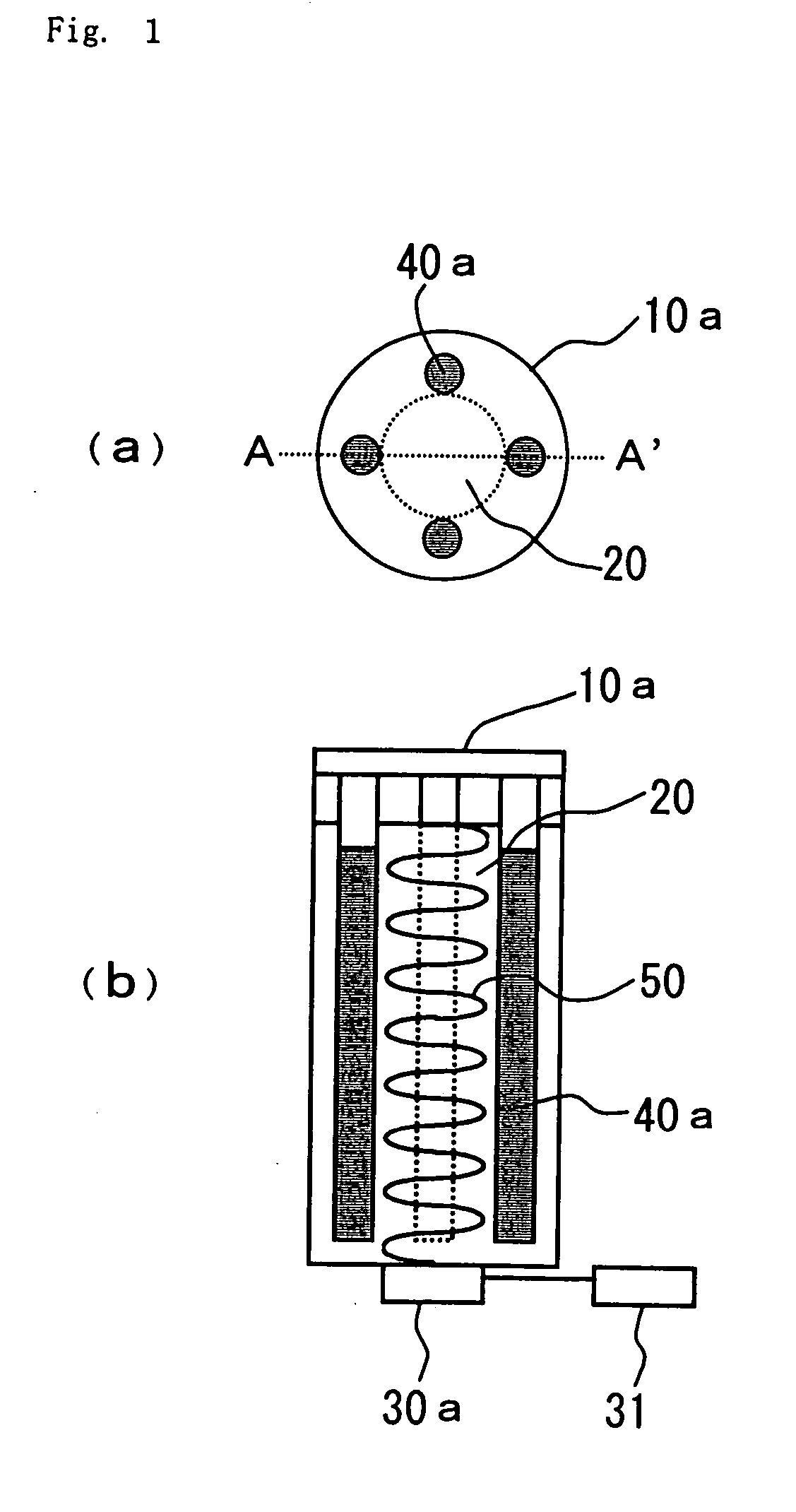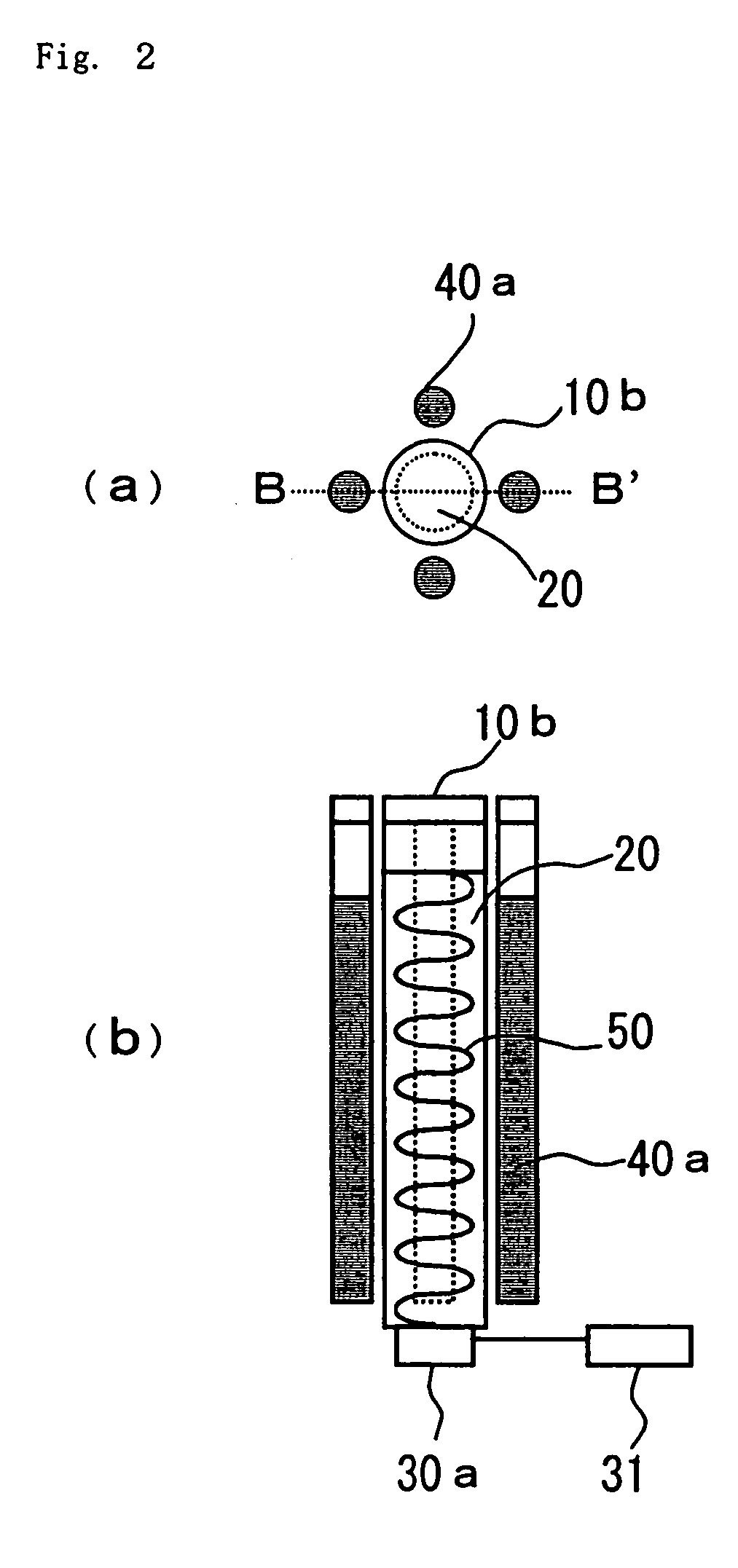Method and device for decomposing environmental pollutants
a technology for environmental pollutants and decomposing methods, applied in mechanical vibration separation, water/sewage treatment by oxidation, contaminated groundwater/leachate treatment, etc., can solve the problems of organic chlorine compounds affecting the environment, affecting the health of the environment,
- Summary
- Abstract
- Description
- Claims
- Application Information
AI Technical Summary
Benefits of technology
Problems solved by technology
Method used
Image
Examples
first embodiment
[0091] FIG. 3 shows still another embodiment of the device for decomposing environmental pollutants of the present invention. This embodiment is different from FIG. 1 in that an ultraviolet lamp 40b has a cylindrical shape and is disposed downwardly in a vertical direction so that it surrounds the central portion of columnar shape of the container which is an effective range of ultrasonic waves.
[0092] In this structure, ultraviolet rays can be irradiated at an optimum level throughout the entire surface of the effective range of ultrasonic waves, and it is thus unnecessary to determine the number and position of ultraviolet lamp 40a taking into consideration the overlap of ultraviolet rays irradiated as in the embodiment of FIG. 1, whereby the decomposition efficiency of the environmental pollutants can further be improved.
[0093] FIG. 4 shows further embodiment of the device for decomposing environmental pollutants of the present invention. This embodiment is different from the embo...
example 1
[0148] Using the decomposition device as shown in FIG. 1 and, as a solution to be treated, 3 liters of a high concentration aqueous solution of 150 mg / liter of tetrachloroethylene as a type of volatile organic chlorine compounds, simultaneous irradiation with ultrasonic waves of 380 kHz, 200 W and ultraviolet rays having the maximum intensity of ultraviolet rays at a wavelength of around 260 nm was carried out, and variation with time of the concentration of the remaining tetrachloroethylene was measured. The results are indicated in FIG. 21.
example 2
[0154] Using the decomposition device as shown in FIG. 1 and, as the solution to be treated, 20 ml of a 1 mg nitrogen / liter (1 mgN / L) solution of an ammonium sulfate aqueous solution as a type of nitrogen compounds, simultaneous irradiation with ultrasonic waves of 200 kHz, 200 W and ultraviolet rays having the maximum intensity of ultraviolet rays at a wavelength of around 260 nm was carried out, and the variation with time of the ratio of formed nitrate ions as the decomposition product was measured. The results are indicated in FIG. 22.
PUM
| Property | Measurement | Unit |
|---|---|---|
| temperature | aaaaa | aaaaa |
| frequency | aaaaa | aaaaa |
| pH | aaaaa | aaaaa |
Abstract
Description
Claims
Application Information
 Login to View More
Login to View More - R&D
- Intellectual Property
- Life Sciences
- Materials
- Tech Scout
- Unparalleled Data Quality
- Higher Quality Content
- 60% Fewer Hallucinations
Browse by: Latest US Patents, China's latest patents, Technical Efficacy Thesaurus, Application Domain, Technology Topic, Popular Technical Reports.
© 2025 PatSnap. All rights reserved.Legal|Privacy policy|Modern Slavery Act Transparency Statement|Sitemap|About US| Contact US: help@patsnap.com



